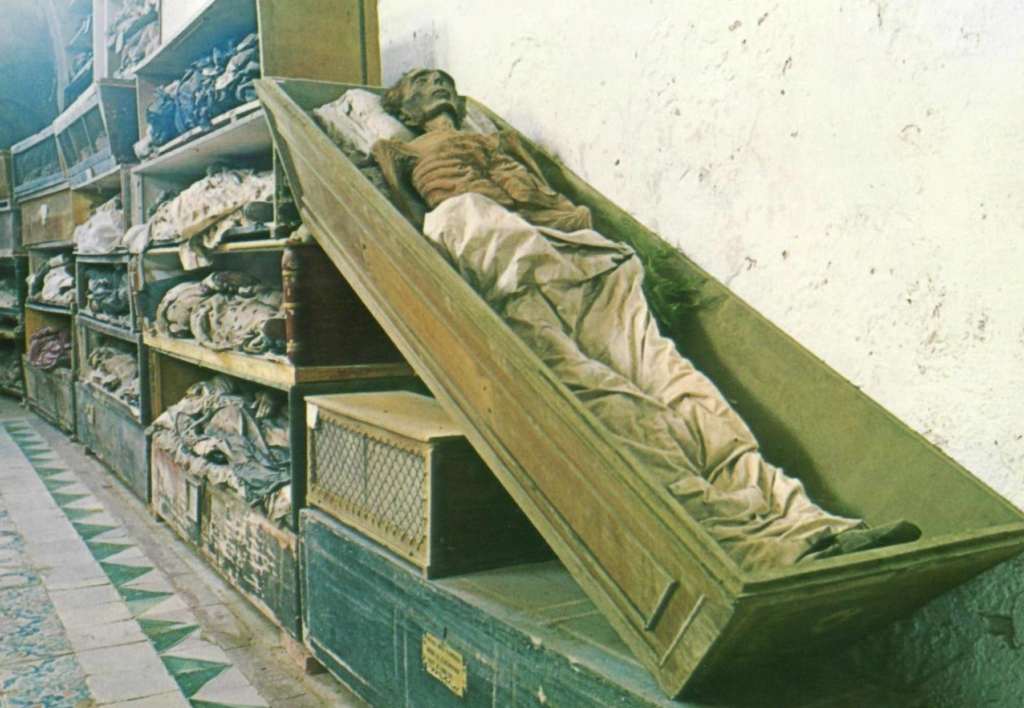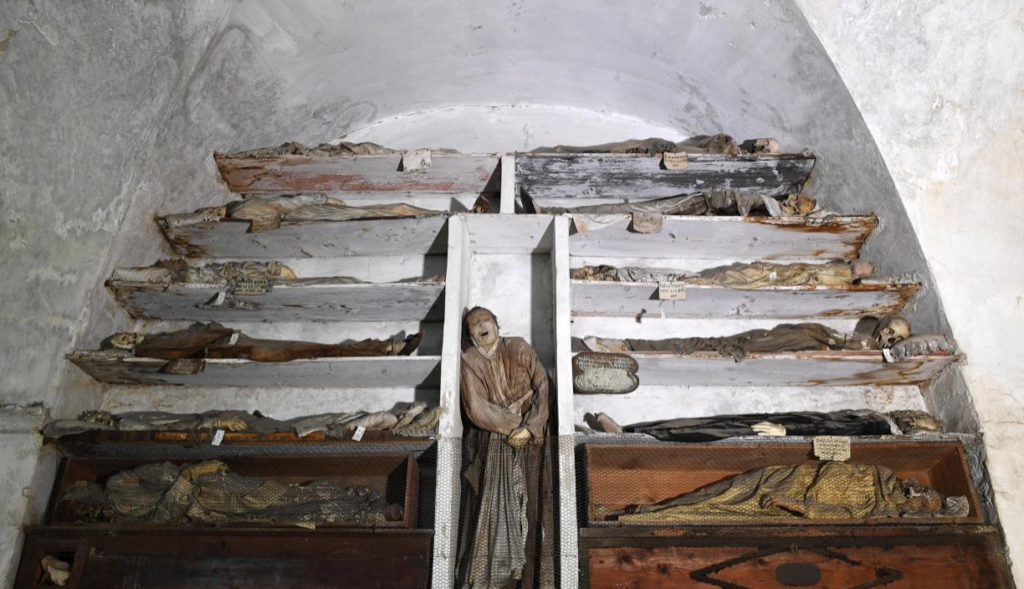November 12, 2019

Interestingly, the best way to get an understanding of the size of the catacombs is from this painting done in 1883 by Calcedonia Reina titled Love and Death. Reina (1842 – 1911) was an Italian painter and poet. He is described as having a melancholic and neurasthenic temperament in life and art.
The Capuchin Catacombs are a dichotomy. Everywhere there are signs that the place is a holy area and should be respected, therefore no photographs. And yet, it is a macabre tourist attraction that belies any form of respect.
The ridiculous thing about no photographs is that they are all over the internet, especially on Flickr and Instagram, showing that hundreds of people simply ignore the rule and the concept of respect.
All photos in this post are from the internet, this author does have respect for the sanctity of an institution such as these catacombs.
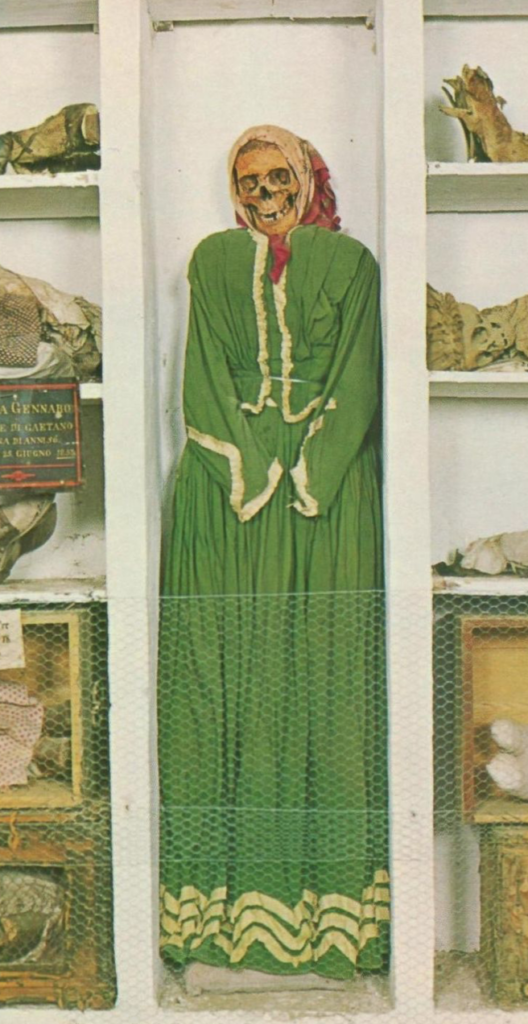
Palermo’s Capuchin monastery outgrew its original cemetery in the 16th century and so the monks began to excavate crypts. Mummification, apparently began in 1599 when the monks interred brother Silvestro of Gubbio, into the catacombs.
The form of mummification the brothers practiced was to dehydrate the bodies on racks of ceramic pipes (which can be seen stacked here and there in the catacombs) Some were washed with vinegar. Not all of the bodies were embalmed, some were simply sealed in glass cabinets.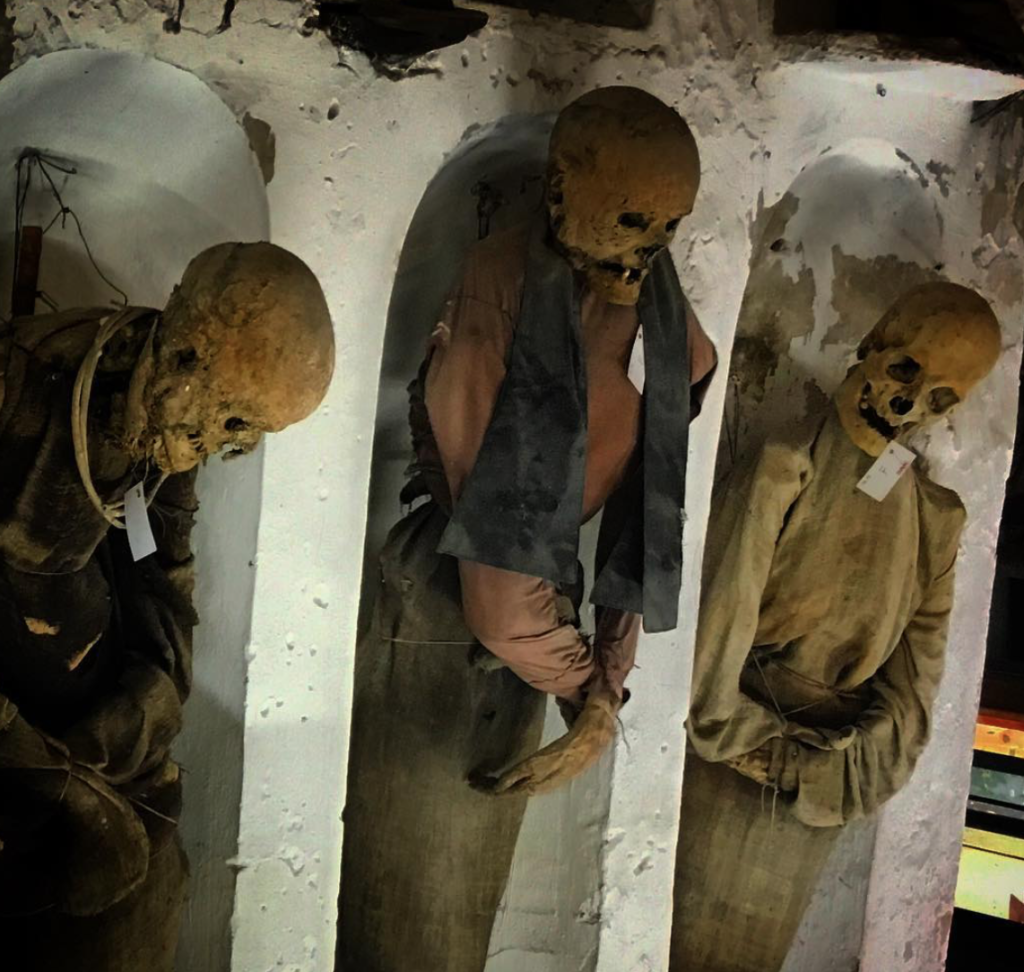 Monks were preserved with their everyday clothing and sometimes with ropes they had worn as a penance.
Monks were preserved with their everyday clothing and sometimes with ropes they had worn as a penance.
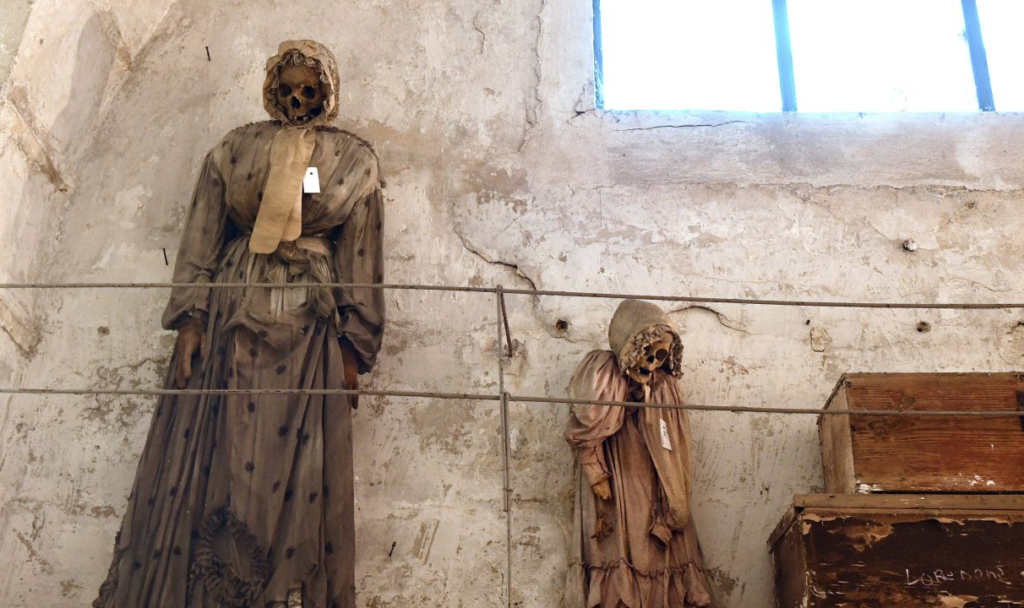 The catacombs were intended for the friars, but later it became a status symbol to be placed in the Capuchin catacombs. The wealthy would ask to be preserved in certain items of clothing, or even to have their clothes changed on a regular basis. Priests were interred with their clerical vestments, and others, as seen in the photographs, in the fashion of the time. Relatives paid to have their dear departed tended, however, if payment did not arrive the bodies were put on a shelf until payments were received.
The catacombs were intended for the friars, but later it became a status symbol to be placed in the Capuchin catacombs. The wealthy would ask to be preserved in certain items of clothing, or even to have their clothes changed on a regular basis. Priests were interred with their clerical vestments, and others, as seen in the photographs, in the fashion of the time. Relatives paid to have their dear departed tended, however, if payment did not arrive the bodies were put on a shelf until payments were received.
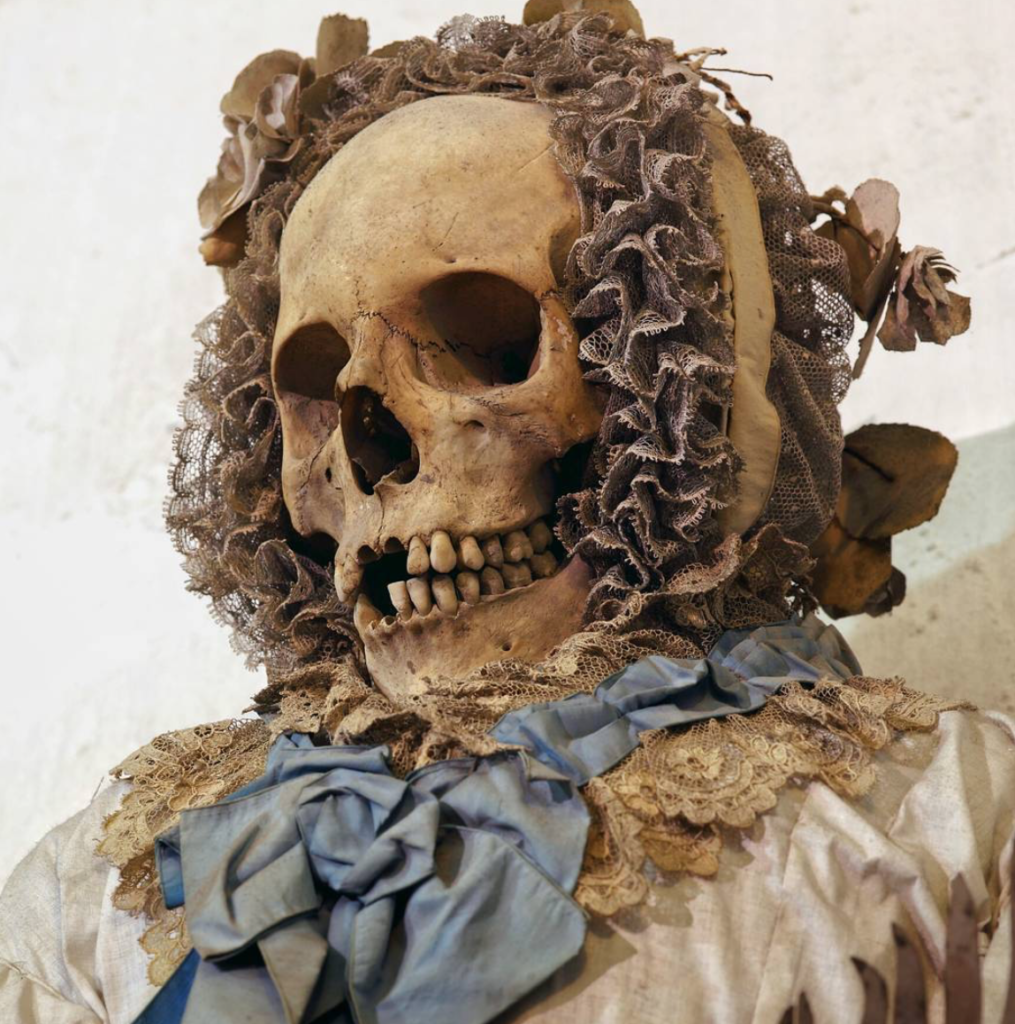
Burials stopped in the 1920s and the last to be interred was a two-year-old little girl named Rosalia Lombardo. Her embalming procedure was very different. Carried out by Professor Alfred Salafia, she was embalmed with formalin to kill bacteria, alcohol to dry the body, glycerin to keep her from drying out and salicylic acid to kill fungi. Apparently his addition of zinc salts to give the body rigidity was what stood his formula apart. Rosalia’s body is so well preserved that she simply appears to be sleeping. There are many photos of sweet Rosalia on the internet, this author has no intention of showing her here.
The whitewashed and very wide halls are divided into categories: Men, Women, Virgins, Children, Priests, Monks, and Professionals. There was a time when coffins were made available to the families of the deceased so that on certain days the family could hold their hands “join” the family in prayer.
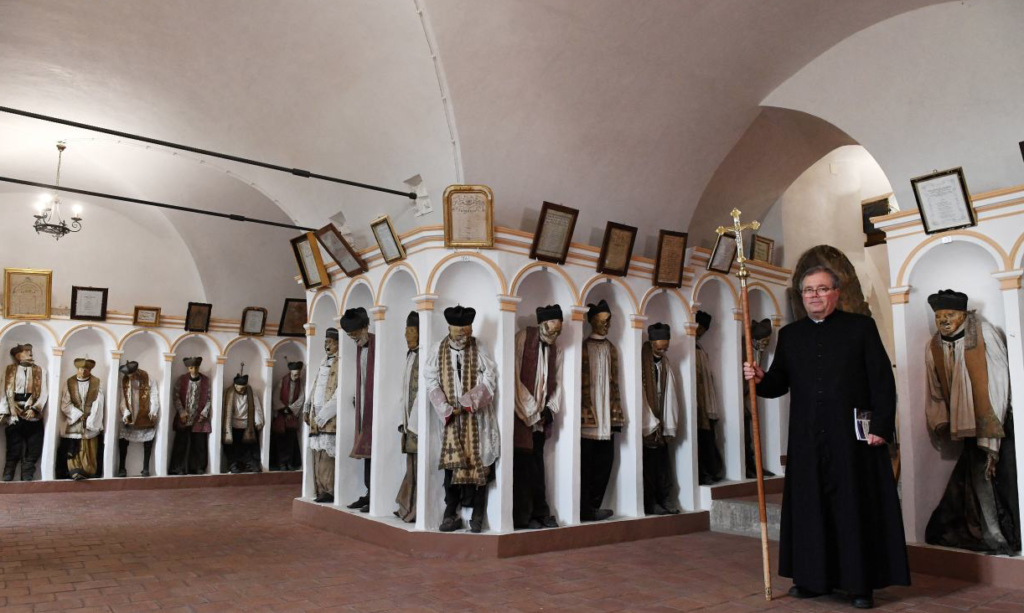
In 2007 the Sicily Mummy Project was created to study the mummies. The mummies are X-Rayed and given CT scans, along with other anthropological and paleopathological techniques to confirm the age and sex of the individuals.
Visiting the catacombs is not for the squeamish, but it is a fascinating look into the way that our view of death is forever changing. There is a 3 Euro charge for entry.
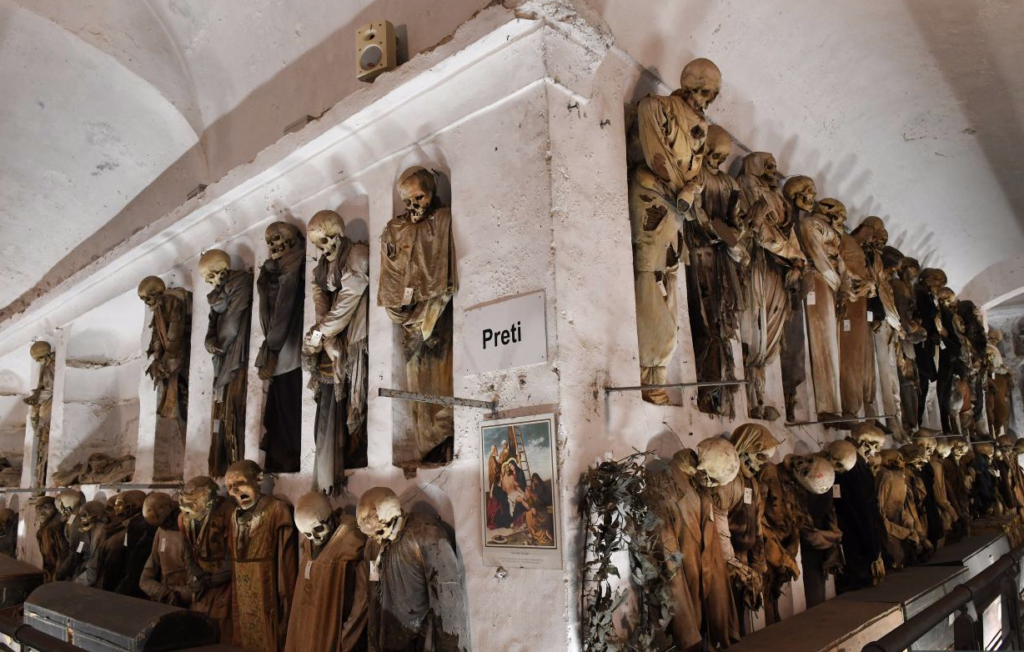 *
*
